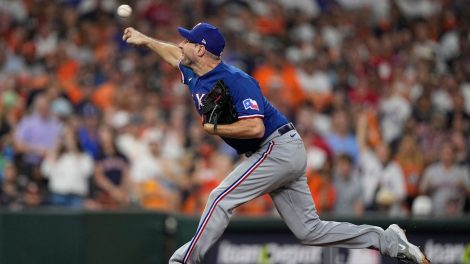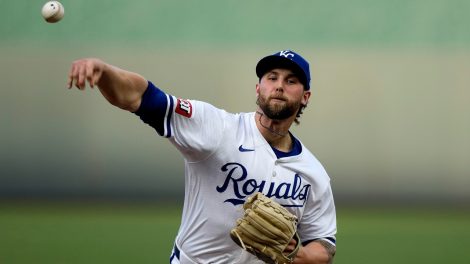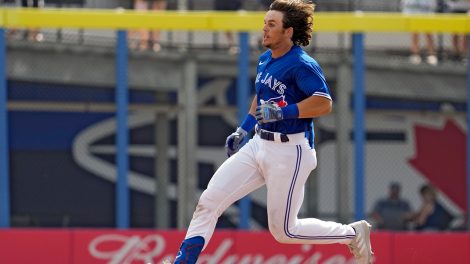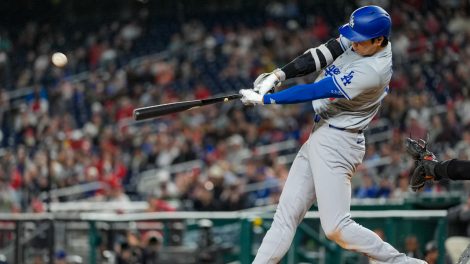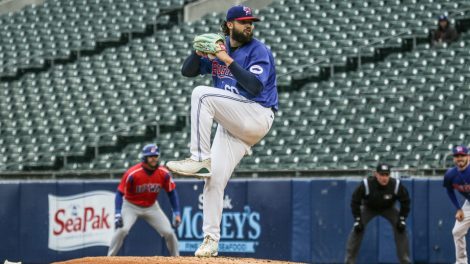TORONTO — Put aside the healthy debate over John Gibbons’s decision Tuesday to pinch-hit Rajai Davis for Colby Rasmus, and consider for a moment how trying to find consistent sources of offence is like searching for water in the desert right now for the Toronto Blue Jays.
The latest example of that came in Wednesday’s 7-0 thumping from the Chicago White Sox, when Munenori Kawasaki, Rajai Davis and Edwin Encarnacion did their best to start rallies while the rest of the lineup proceeded to kill them.
Missing Jose Bautista due to back spasms for a third straight game, the Blue Jays continue to stumble across big nights at the plate as often as camels find oases in the Sahara, and really, there’s not much Gibbons can do about that.
J.A. Happ surrendered a two-out, three-run homer to Tyler Flowers in the second and White Sox lefty Carlos Quintana was hardly threatened after that before a restless crowd of 15,684. At 6-9, and having made mop-up man Ramon Ortiz the 16th different pitcher to see action this season, things certainly aren’t working the way the Blue Jays drew them up.
Through the 15 games, they’ve scored more than four runs just four times, while they’ve been held to three or less nine times. So yeah, times are tough.
“They just kicked our ass basically, all the way around,” Gibbons lamented afterwards. “We’re striking out a lot, that’s for sure, and even a lot of the home runs have been solo jobs.
“You get down in the count, you got to battle, you got to scrap, you can’t settle for the strikeout, nothing good can happen with a strikeout. It’s part of it, we’re going to strike out a lot, that’s who we are, but a cheap single here and there isn’t a bad thing, either.”
That’s why it’s in that light, at least in part, the controversial Davis-for-Rasmus switch to open the seventh inning Tuesday needs to be assessed.
The move is at minimum easily defendable, given that Rasmus struggles against lefties and Davis typically rakes them, and his speed leading off an inning gave the Blue Jays the potential to scratch out a run without needing another hit had he found a way to reach.
But regardless of how you feel about the switch, the more pressing matter is that in taking his shot then and there, it underlined some of his roster’s flaws, given that he really had no other ammunition to throw out at the White Sox later in the game.
And from a bigger picture perspective, having two left-handed hitters in Rasmus and Adam Lind that are either partial or full platoon players batting in production areas of the lineup will regularly create such situations for Gibbons.
In close games when either of their spots in the lineup come up, Gibbons is going to face a tough call on when to play his hand knowing most of the time he’s not going to have enough pieces for a second chance.
“Well, look, at the end of the day, and I don’t think we’ve ever said it was, it’s not a perfect roster,” said GM Alex Anthopoulos. “There’s no question you’d love to have someone who never is pinch-hit for, someone that hits left-handers equally as well as right-handers, it just couldn’t work out that way.”
The Davis for Rasmus move backfired on Gibbons in multiple ways Tuesday.
First Davis struck out. Second, his entrance into the game put him in right field and shifted Emilio Bonifacio to centre, where the go-ahead double by Dayan Viciedo in the ninth inning sailed past him on a drive Rasmus perhaps chases down. Third, with the tying runner aboard in the ninth, the Blue Jays didn’t have a pinch-runner for Adam Lind and no better option than Davis versus closer Addison Reed, when Rasmus versus Reed would have been a far more favourable matchup.
“I loved the move because one, you’re leading off the inning, but two, because of Rajai’s speed, if he gets hit by a pitch, if he walks, if he hits a chopper in the infield and he ends up beating it out because he can with his legs, if somebody makes an error, if it’s a single, anything, he’s immediately in scoring position,” said Anthopoulos. “Because it doesn’t work out doesn’t mean it’s the wrong move.
“To me it’s all about the process, there’s no chance every move you make is going to work out.”
Definitely not, and again, there’s strong logic to Gibbons’s thinking. There’s also something to be said in trying to be the aggressor, rather than sitting back and waiting for all the chips to fall just right.
“We’re going for the win right there,” he explained.
That’s all fine and good, and the debate surrounding his call is part of baseball’s beauty, but to make any judgments on Gibbons’s decision-making based upon it would be missing the point.
Platooning Lind and subbing out Rasmus against the occasional lefties limits Gibbons’s options in-game, and gives him little leeway in creating optimal matchups off his bench. As things stand now, the timing of his shots is going to be crucial.
He may very well only get one chance to create a favourable mismatch.
“Ideally you don’t need to have any platoons,” Anthopoulos conceded. “A big part of the middle of our order is Jose Bautista who happened not to be playing, which is part of it, as well. With all that said, all I can tell you is sure, we’d love to have players that never (get pinch hit for), but that’s the roster we have, that’s what Gibby has to work with. Is it a perfect rotation, bullpen and batting order? Absolutely not. I don’t know anybody who does (have that). I’m not overly concerned about that specifically.”
That’s what Anthopoulos is saying for public consumption now. We’ll see whether he makes any moves in the coming months that prove otherwise.



